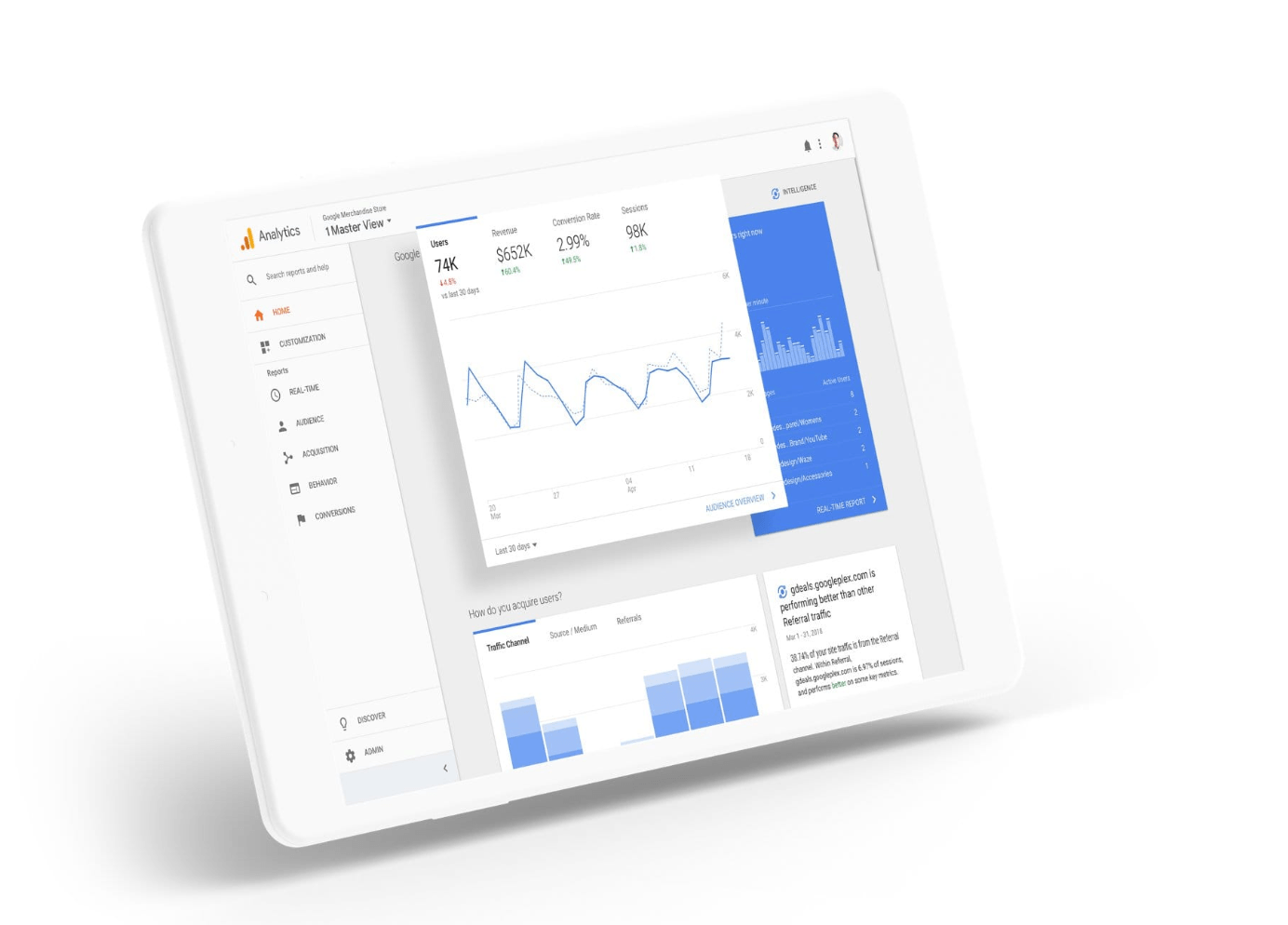At the end of the day, any business owner’s goal is growth—anything from exponential massive growth to just enough growth to keep the lights on. Regardless of what your specific business goals are, tracking business metrics can be a crucial part of the business processes that helps you achieve those goals.
It may seem obvious: Track a business metric, look at the results, and change your strategy accordingly. But when you open the hood, there are a lot more moving parts than it might seem initially.
Which metrics are most impactful for your specific goals and needs? How and how often should you be tracking them? How should you interpret and implement your findings?
Obviously, there’s a lot to learn. Below, we offer a crash course on business metrics and which ones you might want to keep an eye on.



What is a business metric?
A business metric is a numerical measure of how certain aspects of your business are performing. Business metrics are concise and specific so that you can quantify changes in your business performance and, ideally, be able to attribute changes to specific actions or events.
On a granular level, there are hundreds (maybe even thousands) of specific metrics you can track, usually organized into categories. These might include:
- Financial
- Sales
- Marketing
- Technology
- Compliance and risk
- Operations
- Strategy
- Employees
- Customers
Why is it crucial to track them?

When you do it right, tracking business metrics can be extremely powerful for your business. If you can get laser-focused with your metrics, and then use that data to implement meaningful changes, you’ll pave the way for a successful business.
Business metrics can reveal your strengths and weaknesses, as well as what is and isn’t working for you right now. They’re especially potent when you’re working on a key performance indicator (KPI) system that benchmarks business metrics to see how well you’re working toward specific business goals or objectives.
Business metrics are also a way to communicate the health of your business, which is especially helpful if you want to showcase performance to investors, creditors, shareholders, employees, and other types of stakeholders. On a regulatory level, certain types of business metrics can prove that you’re compliant and law-abiding.
Key business metrics to keep track of
Let’s take a look at a few common categories of business metrics and some of the top metrics to consider within them. As you’re starting out, keep in mind that less can be more. Focus on the hardest-hitting business metrics first, then dig deeper once you have a hang of how to track, interpret, and implement the data you find.
Financial metrics
- Operating cash flow (OCF). A company’s net income plus non-cash expenses, such as depreciation and amortization. The operating cash flow ratio assesses a company’s ability to cover liabilities with the cash generated from its operations.
- Net income. Also known as net profit or earnings, net income is a company’s sales minus all its expenses and taxes.
- Working capital. Working capital is calculated as current assets minus current liabilities. It measures a business’s ability to cover its current obligations with its current assets.
- Receivables turnover. The ratio of a company’s total credit sales to its accounts receivable, which is the money owed by customers on credit. A high turnover ratio indicates efficient collection from credit customers.
- Profit margin. The profit of a company expressed as a percentage of its sales revenue. It includes different types margins like operating margin, gross margin, and net profit margin.
- Payables overdue. The percentage of a business’s accounts payable that are overdue. Accounts payable are the amounts a business owes to suppliers and creditors.
- Cash burn rate. The rate at which a company uses its cash reserves, usually from loans or equity funding, before it starts making sales or needs more funding.
Marketing metrics
- Average customer lifetime value. The average revenue you expect to earn from a customer throughout the whole business relationship, from first to projected last purchase.
- Customer acquisition cost. How much you’re spending, on average, to turn a lead into a paying customer, including costs like marketing, advertising, sales team salaries, and whatever else you spend to get customers.
- Customer retention. The measure of how many customers come back to make more purchases after their initial one.
- Customer churn. The percentage of paying customers who don’t make additional purchases, or who cancel their subscription (if applicable).
- Customer satisfaction. A measure of how happy your customers are with the product or service.
Revenue and sales metrics
- Sales cycle length. Measures the time it takes for a customer to go from first thinking about a purchase to actually completing it. Factors like the product type and its price, and the customer affect the sales cycle length.
- Average selling price. The average price for each sale or transaction. When this average price goes up, it can boost sales growth, even if there are fewer units sold.
- Leads and response times. Sales teams track the number of potential new customers, or sales leads, and how quickly they respond to them.
- Quotas. The specific sales targets set by a company, like aiming for 100 new leads every quarter.
- Sales growth. Shows how much sales have increased over a certain time compared to a previous period, in percentage terms.
- Net sales. The total revenue from all sales of goods or services, minus returns or allowances. Net sales forms the basis for many other business metrics.
Social media metrics
- Followers. The number of users who follow a specific account—one of the easiest metrics to measure!
- Impressions. Total views of each social media post, which shows potential audience exposure and the initial impact of the content.
- Reach. The number of new audience members who saw your content for the first time.
- Shares. The number of users who hit the Share button on the respective social media platform to share the content with their own network.
- Engagement. Depending on the platform, engagement typically is measured by likes and comments (as well as shares).
- Click-through rate. The percentage of users that click a post to read/see more than the initial preview.
Website metrics
- Traffic. The total number of website visits from new and repeat visitors. This can measure the whole website or drill down to individual pages.
- Click-through rate. The percentage of users who click on whatever you choose to measure, whether it’s a page, a call-to-action button, or something else.
- Pageviews. The total number of pages that a user views in a typical browsing session.
- Bounce rate. The percentage of visitors who leave your website after only viewing one page.
- Time on page. The total time (in seconds, minutes, hours) that a user spends on your website during a typical browsing session.
- Conversion rate. The percentage of visitors who perform an action that you want them to, like filling out a form or making a purchase.

Email marketing metrics
- Click-to-open rate (CTOR). The number of email recipients who clicked on a link within the email after opening it.
- Engagement score. Assesses how users interact with your emails. It factors in actions like opening emails, clicking on links, and how often they engage with the content.
- Bounce rate. The percentage of sent emails that could not be delivered to the recipient’s inbox. The bounce rate helps you measure the quality of your email list and service.
- Click through rate (CTR). The percentage of recipients who clicked on a link contained in an email.
- Email conversion rate. The percentage of email recipients who take a desired action after clicking on a link in the email, like making a purchase or signing up for a service.
Ecommerce metrics
- Sales revenue. The total income you generate from your online store, typically broken down into weeks, months, quarters, or years.
- Average order value. The average amount that a customer spends on a single purchase.
- Cart abandonment rate. The percentage of customers who add one or more items to their cart but don’t follow-through with the purchase.
- Return and refund rates. The percentage of customers who return your products and ask for a refund (depending on your policy).
- Bestsellers. The top-performing products based on how much revenue they earn. Focus on these for growth.
SaaS metrics
- Product-qualified leads (PQLs). Potential customers who have tried out your product and seem interested in buying.
- Average revenue per account (ARPA). How much money, on average, each customer account brings in. This metric is useful for spotting trends in how much customers are spending and shaping your pricing strategy.
- Conversion rate to customer. The number of your prospects end up paying for your service.
- Monthly recurring revenue (MRR). The income you receive every month from subscriptions.
- Churn rate. How many customers are leaving your service over a certain period. Low churn is great—it means people are sticking around.
How do business metrics differ from key performance indicators?
Metrics track different parts of your business, like how much your sales have grown. Key performance indicators, or KPIs, are the comparison of these metrics against your goals. Say your MRR grew by 30%—that’s a metric. But if your goal was to grow monthly recurring revenue by 50%, and you hit only 30%, then that’s your KPI showing your sales strategy didn’t quite hit the mark.
Track your way to growth
There’s no single right way to go about tracking business metrics, and what works for you now may not even be the best plan in six months. The name of the game is keeping things dynamic: focus on the metrics that have the most impact, and see how they grow and evolve over time.
Start with high-level, high-impact metrics, then explore more granular options once you know what you’re looking for. If you’re doing it right, the business metrics just may be the ones guiding you.
Business metrics FAQ
What is the best metric to evaluate a company?
The best metric can vary. Some metrics, like sales, expenses, and profit, fit almost every business. But it also depends on the business type. For instance, a manufacturer might focus on production costs, while an online store pays more attention to customer satisfaction.
When should you track your company’s business metrics?
You should track metrics regularly, but how often depends on the metric itself. For something like traffic growth, checking every month makes sense because it takes time to see changes in web traffic. But for a metric like cart abandonment rate, a more frequent review—perhaps weekly—could be more beneficial.
How do you choose which metrics to track?
Choosing metrics depends on your business type. A logistics company might prioritize metrics like delivery efficiency or fuel cost, while an ecommerce platform would focus on different metrics such as website traffic or customer engagement. Select metrics that provide the most insight into your specific business operations and goals.






